


















Why It Matters:
Bone loss sneaks up with age—leading to fractures, back pain, and lost strength. Stay independent. Stay strong.
Why REMS?
Fast,












Health
Dietary



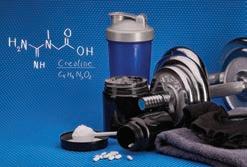






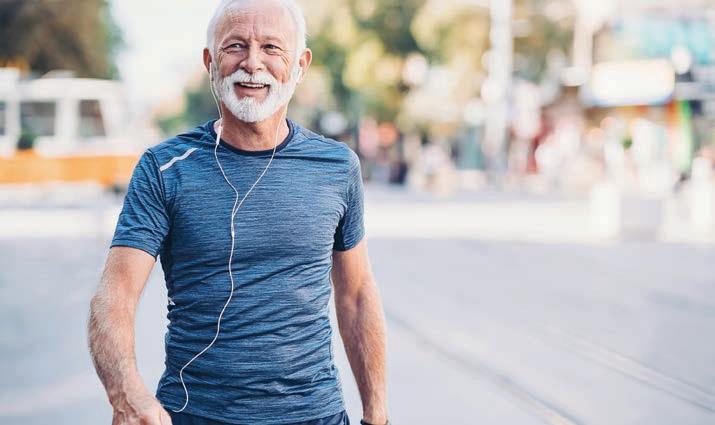




Publisher Tracy Patterson, BSc, MES
Design & Production Vegetorium, LLC
Copy Editor
Sara Gurgen, MS
Digital Platforms
Carolyn Coogan Locable
Natural Awakenings – Phoenix Tracy@NaturalAZ.com NaturalAZ.com
CEO Kimberly B. Whittle
COO Michael Bevilacqua
CMO Vee Banionis
Sr. VP Operations Brian Stenzler, DC
National Editor Sandra Yeyati
Editor Brooke Goode
Copy Editor Melanie Rankin
Print Production Specialist Kevin Rankin
Design Director Agnes Mazeikaite
Production Flip180
Executive Admin Julius Frago
Cover image
AdobeStock_1093914076
© 2025 by Natural Awakenings. All rights reserved. Although some parts of this publication may be reproduced and reprinted, we require that prior permission be obtained in writing. Natural Awakenings is a free publication distributed locally and is supported by our advertisers. Please call to nd a location near you or if you would like copies placed at your business. We do not necessarily endorse the views expressed in the articles and advertisements, nor are we responsible for the products and services advertised. Check with a healthcare professional regarding the appropriate use of any treatment.

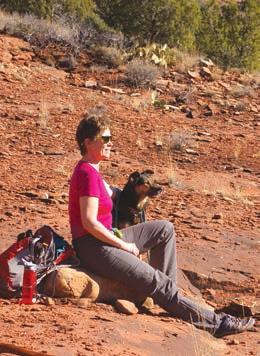
e article in this month’s Natural Pet section, on page 24, made me think of my budgie. When I was young, I decided that I really wanted a bird. ere was only one problem: My mother was terri ed of them, and so the answer to my plea was a resounding “no!”
Needless to say, I wasn’t happy with her response. And despite the fact that we already had dogs, cats and horses to keep me occupied, I set about changing her mind. It wasn’t easy, and to be honest, I can’t even remember how I managed this great feat—but eventually, I convinced her to let me have a budgie.
Tweet was a small bird with minimally scary qualities—at least in my mind. Not so much in my mother’s. I remember chasing her into the bathroom with Tweet one day, where she locked the door and made it very clear what my fate would be if Tweet and I weren’t gone by the time she came out. I thought it was pretty funny, but I sure as heck wasn’t anywhere to be seen with my bird when that door opened.
I had Tweet for a number of years, and he got used to everything—including the cats. ey le him alone at rst, but now and then, one would knock over his cage (which sat on the oor in my bedroom), and Tweet would just y out of harm’s way. I tried to keep my door closed, but anyone who knows cats knows how incredibly determined they can be when they want something.
Looking back, it was my rst lesson in doing what’s best for an animal, because in the end, we decided to rehome Tweet to my cousin, where I could visit him and he’d be in a much safer environment. It was a very hard thing for me to do, and although I’m sure my mother was thrilled to have a “birdless” home, she was decent enough to keep that to herself.















Approximately 3 million Americans receive dental implant procedures annually. Unlike natural teeth, implants do not form a seamless seal with the surrounding gum tissue, posing a potential risk of infection. Researchers at the University of Pennsylvania are working to develop a new implant that mitigates this concern via a twofold defense.
The first defense involves creating the crown to include antimicrobial compounds, currently barium titanate, to effectively combat bacterial growth.
The second line of defense entails embedding light-emitting diodes (LEDs) onto the base of the crown to deliver immune-boosting, red-light therapy to the surrounding gum area. To eliminate the need for a battery, the implant generates its own electricity via the crown’s specialized material, such as the barium titanate, which converts motion—such as chewing—to electrical energy. Although barium titanate is not as strong as the materials currently used for implants, the research team is working on enhancing its properties. The product will be tested in pigs in 2025, paving the way for human trials.

Suddenly feeling old may not be our imagination. A recent study published in Nature Aging examined the molecular changes of 108 adults between the ages of 25 and 75. The participants were tracked for a median of 1.7 years, with a maximum of 6.8 years, during which biological samples were collected and evaluated every three to six months from a range of sources, including the blood, stool, skin, mouth and nasal passages.
The researchers compared the samples obtained from participants at different ages and observed that people seemed to age more rapidly at age 44 and again at age 60. The changes at age 44 were mostly related to fat and alcohol metabolism, as well as an elevated risk of cardiovascular disease. The changes at age 60 related mostly to immune dysfunction and carbohydrate metabolism. According to Stanford Medicine Professor Michael Snyder, these findings might explain why people seem to have more trouble processing alcohol starting in their 40s and become more prone to illness in their 60s.
To diagnose obesity, medical professionals primarily rely on body mass index (BMI), a calculation that estimates the percentage of body fat based on a ratio comparing height to weight. Seeking a more nuanced and precise approach, The Lancet Diabetes & Endocrinology assembled a commission comprised of 56 leading experts from various disciplines, including nutrition, endocrinology, internal medicine and public health, to reevaluate the definition and measurement of obesity.
The commission found that BMI tends to both underestimate and overestimate obesity. For instance, individuals that are stocky and muscular may be erroneously classified as obese due to the weight of muscle tissue, while those with low muscle mass but excess abdominal fat around their organs may not be considered obese.
The commission recommends a revised definition of obesity that emphasizes excess body fat accumulation around the waist, measuring waist circumference, waist-to-hip ratio or waist-to-height ratio, in conjunction with BMI. Alternatively, a dual-energy X-ray absorptiometry (DEXA) scan can be employed to directly measure body fat using low-radiation X-ray capabilities at a higher cost.
In an interview with NPR News, Dr. Robert Kushner, a member of the commission, explained the significance of abdominal fat, stating, “Fat in the belly causes systemic inflammation, which then goes on and causes other metabolic problems like elevated blood sugar, elevated blood pressure and increased fats in the blood.”
The commission also recommended making a distinction between preclinical and clinical obesity. Individuals with clinical obesity would exhibit diminished organ or tissue function due to obesity or substantial mobility limitations. Consequently, they would receive appropriate treatments for their condition. Individuals with preclinical obesity would undergo health counseling and monitoring to reduce the risk of developing clinical obesity.


Congratulations to Mommy, a first-time mother at 100 years old, and to her mate, Abrazzo, also estimated to be around 100. Mommy is a critically endangered Western Santa Cruz Galapagos tortoise that has lived at the Philadelphia Zoo since 1932. In November 2024, she laid 16 eggs, with the first hatching on February 27. To date, four have climbed from their shells, with more still possible. This was Mommy’s fourth egg-laying attempt and the first to result in viable offspring.
Prior to the recent hatchlings, there were only 44 Western Santa Cruz giant tortoises in American zoos. The newly hatched tortoises will be housed at the Philadelphia Zoo for a minimum of five years before any potential relocation to another facility or release into the Galapagos Islands. Scientists estimate that these tortoises may live up to 200 years, with the oldest on record documented to have lived 175 years in captivity.
Seven of the Galapagos Islands are currently home to one or more of 13 native tortoise species. Historically, each of the 21 islands had its own species, with populations numbering in the hundreds of thousands. After being hunted to near extinction, their numbers have since rebounded to approximately 17,000 with the help of conservation and breeding programs, as reported by the London Zoo.
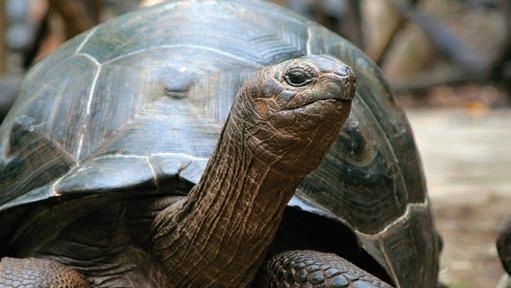
A study led by a University of Arizona researcher sheds light on the interactions between Indigenous peoples in the Americas and early dogs and wolves. The study, published in the journal Science Advances, indicates that close relationships between people and ancestral dogs began in Alaska as early as 12,000 years ago, about 2,000 years earlier than previously thought. Chemical analysis of unearthed canine bones revealed that the animals regularly ate fish, suggesting a level of interaction with humans.
A recent study published in the journal Science provides the most comprehensive analysis of the current state of the U.S. butterfly population. The research team combined data from 35 citizen-scientist programs across the continental U.S. that counted butterflies. Their analysis was based on 12.6 million individual butterfly sightings.
The findings reveal a concerning decline of 22 percent of our 554 butterfly species over the past two decades, affecting almost every region of the country. For every species found to have increased in population, there were 13 species that declined in population, and some of those declines were significant. While tackling climate change and regulating pesticides are crucial policy interventions, people can actively contribute to reversing these declines by creating habitat refuges for butterflies and other insects. This can be achieved by planting native flowers, shrubs and trees.


Over the last 20 years, men’s daily use of personal care products has nearly doubled, according to the Environmental Working Group. Men apply shaving cream to their face, splash on cologne, shower with body wash, style their hair with wax and use strong antiperspirants without realizing that they might be exposing themselves to a host of toxins.
The most prevalent health culprits are hormone-disrupting phthalates and fragrance extenders that have been shown to inhibit testosterone levels and reduce sperm count. Preservatives such as formaldehyde, known to cause cancer, are also commonly used.
The effects of grooming routines extend beyond the individual because fossil fuels are expended to transport these products and discarded plastic containers accumulate in landfills, eventually degrading into microplastics that pollute waterways and contaminate the human food supply.
To mitigate these adverse effects on human and planetary health, consider using the following eco-friendly, organic and cruelty-free products.
• Reusable safety razors crafted from bamboo or metal and fitted with recyclable metal blades provide a close shave without contributing to the 2 billion disposable razors that end up in landfills every year and take more than a century to biodegrade.
• Electric shavers are reusable, reduce water use and have a lower carbon footprint than disposable razors.
• Sustainably sourced beard-softening oils such as jojoba, argon or meadowfoam are infused with organic and vegan botanics by companies such as Copper Johns.
• Aluminum-free deodorants maintain freshness throughout


the day using bacteria-fighting activated charcoal, natural clays and botanical additions like coriander. Antiperspirants that inhibit perspiration by blocking pores with aluminum-based ingredients should be avoided.
• Natural body washes and soaps with ingredients such as Jimmy Red corn, coconut oil and kaolin clay gently clean pores and smooth the skin without employing drying agents. Choose products packaged in natural materials.
• Chemical-free colognes with natural fragrances derived from essential oils, herbs and spices can be alluring without being overpowering. Some use organic sugarcane alcohol. Noteworthy brands are Dr. Squatch, Henry Rose and unisex fragrances by Heretic.
• Natural shaving creams formulated with skin-nourishing ingredients such as coconut-derived surfactants, vegetable glycerin, aloe, vitamin E and botanicals provide a close shave, even for sensitive skin.
• Chemical-free shampoos employ sulfate-free cleaning agents and natural botanicals to nourish the hair. Additionally, zinc and botanical additions like sage and tea tree oil are incorporated to address scalp and dandruff concerns.
• Hair waxes and pomades should not contain petroleum. Look for ingredients like strong-hold beeswax, or simply choose a water-based product.
by Carrie Jackson
While many people seek to prolong life, those extra years will not be fulfilling without good health. “The United States has one of the worst healthspans in the world. We have the highest rate of chronic disease and spend too much time suffering and deteriorating,” declares Dr. Eric Plasker, a chiropractor and creator of The 100 Year Lifestyle, an instructional manual and wellness system for making the most of an extended lifespan.
According to Plasker, “How you take care of yourself every day has a direct effect on your long-term quality of life. Unfortunately, the current healthcare system has focused mostly on symptoms and disease treatment.
We need to have more of a lifestyle-care approach to help you function at your highest level for a lifetime, instead of constantly trying to get your health back.”
Dr. Peter Diamandis is a physician, engineer, entrepreneur and co-founder of the BOLD Longevity Growth Fund, which invests in biotechnologies that address the root causes of disease and extend healthspan. He is also the co-founder and chairman of Fountain Life, a company that focuses on advanced diagnostics and preventative health to help people live longer and healthier lives.

Diamandis asserts that people possess greater control over their healthspan than they may think. “We’re at a turning point in health care—shifting from a reactive, one-size-fits-all model to a proactive, personalized and data-driven approach,” he remarks. “While many people assume their longevity is mostly genetic, the data tells a different story. Studies involving tens of millions of people show that your genes account for only 7 to 30 percent of how long you live. That means the rest is up to you— your lifestyle, your environment and what you eat.”
The impact of food on our well-being cannot be underestimated, and Diamandis points out that food can be either the slowest form of poison or the most powerful medicine. In a nutshell, our daily meal choices put us in control of how we age. He recommends anti-inflammatory foods such as broccoli, spinach, Brussels sprouts, blueberries, walnuts, chia seeds and avocado.
“I eat the rainbow every day, because flavonoids, carotenoids and polyphenols act as molecular defenders, protecting your DNA, supporting your mitochondria and reducing your risk of conditions like heart disease, cancer and neurodegeneration,” he states. “I also use extra-virgin olive oil and turmeric liberally, which have both been shown to reduce inflammation at the cellular level. And I keep snacks like frozen blueberries and raw walnuts within arm’s reach, because what you actually eat is what you have close by.”
Avoiding harmful foods is just as important. “Sugar is incredibly inflammatory. It shrinks the hippocampus, disrupts metabolism and fuels conditions like diabetes and Alzheimer’s. Most people don’t realize how addictive it is or how much damage it causes until they cut it out and feel the difference,” says Diamandis.

Integrating modalities such as chiropractic care, acupuncture, yoga and meditation into a wellness plan can help our bodies function at an optimum level. Plasker notes that the number, intensity and duration of chiropractic treatments vary based on a patient’s baseline health. “If you are meditating five times a day and have no underlying decay, you will need a lot less lifestyle care than if you are a weekend warrior or a marathoner who might have more decay," he explains.
While chiropractic care is well known for success with back and nerve pain, its hidden specialty is in functional and performance-based care. “Physical therapy, functional medicine and nutrition therapy work better with the addition of chiropractic care,” asserts Plasker. “It helps to align the spine so the nervous system can communicate between the brain and body the way it is supposed to.”
As we age, we may encounter ongoing consequences from the wear and tear that occurred in our younger days. “The pounding and collisions from youth sports can have a lasting effect on the body and can accelerate osteoarthritis,” Plasker points out. “Regular chiropractic adjustments help to restore alignment, balance, motion and function, so the body doesn’t continue to deteriorate. Anti-inflammatory supplements such as turmeric, glucosamine and chondroitin can help with acute inflammation, but if the alignment of the spine isn’t right, they’ll be facing a constant battle.”
Reframing fitness routines to prioritize long-term sustainability can help the body repair previous damage. “If you were an athlete, you can still be an athlete, but you might have to change your approach,” suggests Plasker. “Align the care you receive with the lifestyle you are choosing to live. If you’re going to train for triathlons, you need to eat healthy and stretch more. You need to increase your supplementation and the frequency of your chiropractic adjustments. But if you’re just going for hikes and power walks, you’ll need less lifestyle care. It depends on you and what you want.”




Holistic stress management is essential for longevity and overall wellness. “A nervous system that is always in fight-or-flight mode can lead to inflammation, burnout and elevated blood pressure, putting undue stress on the heart,” explains Plasker. “Chiropractic intervention, coupled with tools such as aromatherapy and meditation, can create peace for the nervous system so you can use your energy for other things.”
Lisa Faremouth Weber, the owner of Heaven Meets Earth Family Yoga Studio, in Evanston, Illinois, notes that practices such as crystal bowl sound healing, yoga and mindfulness can help calm the body and contribute to overall wellness and longevity. She also points out that there is considerable scientific evidence that supports the health benefits of practicing yoga, meditation, tai chi and qigong.
“Yoga and other complementary mind/ body approaches integrate an individual’s physical, mental and spiritual components to improve cardiorespiratory health, physical and mental health and stress-related illnesses,” she explains. “Dr. Dean Ornish introduced millions to yoga’s health benefits through his published studies, which
demonstrated that heart disease can be reversed through diet, meditation, group support and yoga. Additionally, ancient texts such as the Upanishads or Patanjali’s Yoga Sutras teach that the body follows the mind, and the mind follows the breath. Breath awareness and breathwork cultivate a balanced, harmonious and equanimous mind, enabling clarity and focus.”
Being mindful of daily habits and wellness routines in the present moment can lead to an extended healthspan down the road. “The goal isn’t just to live longer; it’s to stay healthy long enough to ride the wave of breakthroughs coming over the next decade and reach what we call ‘longevity escape velocity’. That’s the moment when, for every year you live, science can extend your life by more than a year,” explains Diamandis. “We’re not far off. And the choices you make today—using data-driven diagnostics, embracing functional medicine and sticking to lifestyle habits that work—are what will get you there.”
Carrie Jackson is a Chicago-based freelance writer and frequent contributor to Natural Awakenings. Connect at CarrieJacksonWrites.com.
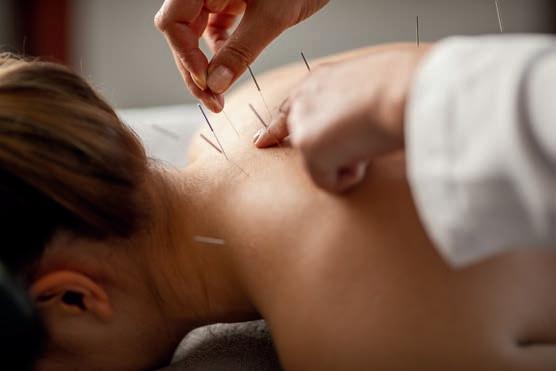



by Carrie Jackson

We have a finite number of hours in the day, and worrying about things that are out of our control can take up time that could be used for more productive and fulfilling things. “There are some activities that universally charge us up or deplete us. For example, most people are energized by quality time with family and friends or by reading a good book. On the other hand, universal energy drainers include overworking, overeating, drinking too much alcohol and taking drugs,” says Dr. Eric Plasker, founder of The 100 Year Lifestyle, an instructional manual and wellness system for making the most of an extended lifespan.
He recommends taking a personal energy inventory. Make a list of the foods, hobbies, habits and people in daily life. Then make note of the things that either drain or inspire energy throughout the day. Do not think of energy drainers as problems that need to be eliminated. Rather, the list is a way to raise awareness about where energy is going and how to get it flowing positively by turning drainers into gainers. For example, if driving in traffic elicits anger, adjust the travel schedule or put on relaxing music and do deep breathing exercises to shift into a more positive state.
by Ingo Mahn, DDS
Let’s be honest: between late-night scrolling, endless work emails, Netflix binges, and maybe a little too much caffeine, sleep often ends up dead last on the priority list. But if you’re dragging yourself through the day, struggling at the gym, spacing out at work, or feeling off in the bedroom, poor sleep might be the sneaky villain behind it all.
Here’s what poor sleep is actually doing to your body and brain—and why getting good sleep might just be your new superpower.
Whether you’re a weekend warrior or a fullon fitness junkie, sleep is your body’s ultimate recovery tool. It’s when your muscles repair, your energy recharges, and your hormones balance out. Miss out on it? You’re basically training in low-power mode.
Studies have shown that athletes who sleep more—like 9 to 10 hours—run faster, react quicker, and perform better. On the flip side, sleep deprivation results in slower reflexes, worse endurance, and even a greater likelihood of injury. So, if you’re wondering why your gains have stalled, maybe it’s time to hit the sack as hard as the gym.
Think of sleep as a nightly reboot for your brain. It sharpens your memory, boosts focus, and helps you make better decisions.
Even just one night of bad sleep can mess with your thinking as much as being drunk
(yes, really). And over time, chronic sleep loss ups your chances of anxiety, depression and even brain diseases. So, if you’ve been losing your keys, forgetting names, or just feel like your brain’s running on dial-up, better sleep might be the easiest fix out there.
Here’s a topic that can get awkward, but it needs to be said—bad sleep can lead to low testosterone, reduced libido, and, yes, even erectile dysfunction.
Testosterone is produced while you sleep (especially during the deep, dreamy kind), and skimping on rest causes those levels to drop. One study found that men who got only five hours of sleep a night for a week had testosterone levels like someone 10 years older. Ouch.
So, if things aren’t quite firing on all cylinders, don’t immediately panic. Try prioritizing sleep and see what happens.
Here’s the kicker: Bad sleep makes you stressed, and stress makes it harder to sleep. Welcome to the worst merry-goround ever. Add in poor diet, low energy, mood swings, and all the other side effects—and suddenly life feels way harder than it needs to be.
But the good news? You can get off the ride.
• Stick to a schedule. Go to bed and wake up at the same time every day (yes, even weekends).
• Cut the screens. Blue light before bed messes with your melatonin. Try reading or relaxing instead.
• Ditch late-night caffeine and booze. They mess with your sleep cycles more than you think.
• Make your room sleep-friendly. Dark, quiet and cool is the sweet spot.
• Still struggling? Talk to a doc—sleep apnea and insomnia are real, treatable issues.
Sleep isn’t lazy—it’s powerful. Getting enough of it can boost your workouts, sharpen your mind, and even improve your love life. So next time you’re tempted to burn the midnight oil, remember: Nothing good happens after 2 a.m. (except maybe REM sleep).

Dr. Ingo Mahn is a 1985 graduate of Marquette University School of Dentistry. He is an accredited member of the International Academy of Oral Medicine and Toxicology (IAOMT) and holds a doctorate in integrative medicine from Capital University, in Georgetown. To learn more, visit MyNaturalDentist.com. There you can take an online airway assessment and download a free ebook. See ad, page 3.
Advertorial

At the Southwest Institute of Healing Arts (SWIHA), our 200Hour Yoga Teacher Training (YTT) is more than a certification—it’s an invitation to transform from the inside out. While online options may offer flexibility, nothing compares to the power of showing up—body, breath and heart—in a dedicated, inperson training environment.


In-person training offers something profoundly different—and deeply needed. With personalized feedback from experienced instructors, you’ll receive immediate guidance on alignment, sequencing and verbal cueing that accelerates your growth and builds true confidence. Being physically present fosters powerful connections with classmates and mentors, creating a strong support system and sense of community that keeps you inspired and accountable. Immersed in a focused, distraction-free space, you absorb more, retain more and embody the teachings on a deeper level. You’ll also gain hands-on experience teaching live classes, allowing you to refine your voice, manage group energy, and truly find your footing as an in-


structor. Most importantly, this immersive environment encourages a genuine integration of yoga philosophy, mindfulness and lifestyle practices—creating lasting transformation both on and off the mat.
SWIHA is proud to offer the $1,000 YTT Give Back Scholarship for students committed to sharing yoga as a gift to their community after completing the program. We believe in training instructors who are also leaders, change makers and healers.
Graduates of any Yoga Alliance-accredited 200-Hour YTT program are warmly invited to transfer into one of SWIHA’s advanced yoga diplomas—including our prestigious 1,000-Hour Yoga Therapy Program. We’re honored to offer one of the only fully residential pathways to International Association of Yoga Therapists (IAYT) certification and to host world-renowned teacher Kamini Desai, whose expertise in yoga nidra and yoga therapy is transforming the field.
This is more than training—it’s a calling. A community. A catalyst.
Your journey begins now. Are you ready to answer the call?

Southwest Institute of Healing Arts is located at 1538 E. Southern Ave., in Tempe. For more information, call 480-994-9244, email Info@swiha.edu or visit swiha.edu. See ad, outside back cover.

by Chloe Karydes Krecun
Portable and packed with beneficial nutrients, protein bars are a popular snack for busy lifestyles, fitness enthusiasts and anyone looking to curb cravings and meet nutrition goals. While store-bought options are widely available, do-it-yourself (DIY) protein bars are easy to customize for individual dietary needs.
“A lot of people snack based on convenience,” says Melody Schoenfeld, a certified personal trainer in Pasadena, California. Protein bars offer a tasty, filling and nutritional goodie that can be consumed in just a few bites.

Yasi Ansari, a dietitian nutritionist, specialist in sports dietetics and spokesperson for the Academy of Nutrition and Dietetics, explains that homemade protein bars offer a fully customizable approach to nutrition. “Since the bars are DIY, you have full control over ingredients and flavor profiles,” she says. This means avoiding artificial additives, excessive sugars or allergens that may be present in commercial options.
Protein is a complex molecule made of amino acids that provides energy and functions as the building block for bones, muscles, cartilage, skin and blood. “It is the one macronutrient that is never abjured by fad diets,” says Janet Chrzan, Ph.D., a professor of nutrition at the University of Pennsylvania. “We have a cultural preference for protein; we Americans often consider it to be the most important element of food.”
As a health and nutrition coach, Schoenfeld advocates for convenient and easy ways to get protein into a diet. For many, protein bars fill that void. “For most people age 18 and beyond, we’re looking at consuming somewhere between 0.8 to 1.2 grams of protein per pound of body weight for a healthy adult daily,” Schoenfeld recommends.
Before diving into a recipe, Ansari says it is important to determine how the bar
will address a dietary need and ask, “Am I looking for a bar that helps with postworkout recovery, a snack to keep me full between meals or a fiber-rich option to support digestion?”
Knowing the purpose can guide ingredient selection. “For example, if it’s for the purpose of recovery, we’re going to want to make sure we’re getting close to 20 grams of protein per bar for muscle repair and building, while also getting enough carbohydrates to restore energy,” says Ansari. Ingredients like dried fruits, oats or whole grains help boost carbohydrate content, making the bars more effective for postworkout replenishment.
For those aiming to create a gut-friendly bar, Ansari suggests being mindful of sugar alcohols and artificial sweeteners that can cause digestive discomfort. “Consider smooth nut or seed butters if sensitive to crunchy varieties, and aim for fiber from nuts, dried fruits, flax and chia seeds,” she adds.
Both Schoenfeld and Ansari note that the greatest advantage of making protein bars at home is being able to select high-quality, nutrient-dense ingredients. Whether addressing dietary restrictions, avoiding allergens or satisfying a preference for organic, whole foods, DIY protein bars allow for total ingredient transparency.
A little investment of time helps ensure that healthy, smart and convenient snacks will always be within reach. Ansari offers these suggestions when crafting a protein bar at home:
• C hoose a protein: Plant protein powders such as pea protein blend easily and well. Alternatives to powders include almond or seed butters, or whole nuts and seeds that can be chopped in a food processor.
• C hoose a fruit: Fruits add fiber, micronutrients and antioxidants. Aim for two to three grams of fiber per bar. Tasty sources include dried apricots, dried cherries, dried apples, raisins and dates.
• Add spices: To amplify the flavor profile, include spices such as cinnamon, pumpkin spice or nutmeg.
• E xperiment with texture: Add rice cereal for crunch or oats for a chewy consistency.
• Include healthy fats: Options include walnuts, flaxseeds, chia seeds and coconut oil.
• Incorporate carbohydrates: Oats, rice cereal or dried fruits are great choices for energy.
• C hoose natural sweeteners: Dried fruits provide sweetness to any bar, as well as fiber and nutrients like iron and vitamins A and C. A bit of fruit juice can also help blend the ingredients together. Other healthy alternatives are honey and maple syrup.


Karydes Krecun is a student at the University of Illinois Urbana-Champaign. Connect with her at LinkedIn.com/in/chloe-karydes-krecun.
YIELD: 10 BARS
2 cups Medjool dates, pitted (soak in water if hard)
1 cup unsweetened shredded coconut
½ cup hemp seeds or protein or collagen powder
1 cup raw cashews
½ cup unsweetened cocoa powder
2 Tbsp coconut oil
1 Tbsp maple syrup
Pinch of salt
Optional: 2 Tbsp instant coffee or espresso powder for an extra kick
Combine all ingredients into a bowl and mix well.
alpaksoy from Getty Images/CanvaPro
Form mixture into 1-inch by 3-inch bars. Add slightly more maple syrup or coconut oil to make the batter wetter, or slightly more shredded coconut, hemp seeds, protein or collagen powder to make the mixture drier to form into bars.
Place bars in a glass container and chill in the refrigerator for 30 minutes before serving. The bars will keep in the refrigerator for about one week or in the freezer for about one month.
Recipe courtesy of Holley Samuel, MEd, RD, CSSD, CPT, a sports dietitian.


For a boost of vitamins A and C, fiber and healthy fats, try these easy-to-make treats. Drinking extra fluids is recommended when consuming no-bake oat bites.
YIELD: 25 BITES
¾ cup smooth almond butter or sunflower seed butter
½ cup pumpkin puree
½ cup ground flax seeds
¼ cup honey
2 tsp pumpkin pie spice
1½ cup old-fashioned oats
Combine all the ingredients except for the oats in a large bowl. Form one to two tablespoons of the mix by hand into round bites. Roll the bites in the oats and place them in a bowl.
Place the bowl of bites in the freezer for 45 minutes to two hours based on desired firmness. Store in the refrigerator in an airtight container for up to six days, or keep them in the freezer for up to three months.
Recipe courtesy of Yasi Ansari, MS, RDN, CSSD, spokesperson for the Academy of Nutrition and Dietetics.
YIELD: 10 BARS
1 cup peanut butter or other nut or seed butter
½ cup honey
1 cup rolled oats
¼ cup chia seeds
2 Tbsp protein or collagen powder (or additional peanut butter)
½ cup mini chocolate chips
Combine all ingredients into a mixing bowl and mix well.
Form mixture into 1-inch by 3-inch bars. Add slightly more honey or peanut butter to make the batter wetter, or slightly more oats and powder to make the mixture dryer to form into bars.
Place bars in a glass container and chill in the refrigerator for 30 minutes before serving. The bars will keep in the refrigerator for about one week or in the freezer for about one month.
Recipe courtesy of Holley Samuel, MEd, RD, CSSD, CPT, a sports dietitian.

These yummy bars provide iron, vitamin C, omega-3 and potassium
YIELD: 12 BARS
5 Medjool dates, pitted
⅓ cup dried apples
1½ cup old-fashioned oats
1 tsp chia seeds
1 cup almond or seed butter
⅓ cup protein powder (derived from brown rice or peas)
2 tsp cinnamon powder
1 tsp vanilla extract
Optional: 1 Tbsp water or apple juice to blend if too sticky or crumbly
Mix dates and dried apples in the food processor. Add oats, chia seeds, almond or seed butter, protein powder, cinnamon and vanilla extract. If the almond or seed butter is too stiff before adding it to the food processor, gently warm it in the microwave for 15 to 30 seconds or place the jar in a bowl of hot water to loosen it.
Slowly blend the mixture until thickened. If the blend is too sticky or crumbly, add 1 tablespoon of water or apple juice for a softer texture.
Line a 13-by-10-inch baking pan with parchment paper. Add the mixture and firmly press down to spread it out evenly. Place the pan in the refrigerator for two hours before cutting into bars.
Recipe courtesy of Yasi Ansari, MS, RDN, CSSD, spokesperson for the Academy of Nutrition and Dietetics.




by Megy Karydes
Movement serves as a universal language, and one of the most powerful ways fathers can connect with their children. According to a study published in the American Journal of Lifestyle Medicine, when parents model active lifestyles, they not only boost their own fitness but also lay the foundation for their children’s lifelong physical, social and cognitive development.
Regular physical engagement builds habits that can lead to healthier, happier lives. When a family engages in such activities together, what may have started out as exercise becomes a memory-making, relationshipenhancing and mood-boosting occasion.
Whether tossing a ball, hiking a trail or simply dancing in the living room, physical activity provides dads and kids a shared experience that strengthens their bond. There are many easy ways to spend quality time together, away from the distractions of screens and daily routines.
“The goal, at least from my parenting perspective, is to raise healthy, happy and resilient kids. A lot of people take for granted how powerful play can be,” says Brian Comly, an occupational therapist and father of two who founded MindBodyDad. com to help families enjoy movement, play

and togetherness. “It’s important for adults to model curiosity, creativity and connection, and instill these skills early. Oftentimes, the substitute is a phone, tablet or TV, which actually inhibits or atrophies these skills.”
W. Zach Smith, a Seattle-based physical therapist and founder of HIDEF Physical Therapy, believes that modeling healthy behavior and starting early is paramount, and it doesn’t have to be overly complicated. “Starting from a young age, I would bring my kids to the garage when I worked out. Now, both of them will copy me and grab small, one-to-three-pound dumbbells and do a lot of the exercises that I do,” Smith shares, adding that when the kids were younger, they would help him with the yard work, pulling the garden cart and picking up after him.
Rucking, a practice where a child is strapped to the back of a parent or caregiver for a walk, has been a favorite activity for both Comly and Smith. Smith notes that rucking not only enhances the physical challenge for the parent but also provides immense enjoyment for their children. As his daughter has matured, she has developed the ability to jump out of her stroller and run alongside it for extended periods, alternating between running and resting.
Physical activities foster a deeper connection between individuals, extending beyond simple muscle development. Andres Ochoa, a project manager in Chicago and a father of two daughters aged 10 and 12, has observed that engaging in shared physical activities strengthens their family bond. After meeting their respective sports commitments during the week, Ochoa makes sure to dedicate the weekends to family time.
Ochoa finds that shared physical activities enable him to remain fully present and focused, while minimizing distractions. “Being together and active creates moments of true connection, where kids feel seen and valued,” he says, noting that such moments

can lead to meaningful conversations, stronger emotional ties and improved communication.
Depending on the season, Ochoa may take his daughters to their local YMCA to practice basketball or ride bikes on a nearby trail. Occasionally, they will set a family goal such as completing a 5K run. Ochoa’s primary objective is not to introduce additional stress into their lives. They participate in the Turkey Trot every year, and in the absence of scheduled races, engage in runs as a family, challenging each other. He often allows his daughters to take the lead in selecting their activities.
Even with today’s digital distractions, dads that prioritize physical activity find creative ways to incorporate movement into their daily
routines. For instance, Ochoa walks his daughters to school every Friday whenever possible. If the weather is bad or they are headed somewhere after school, he strategically parks several blocks away, allowing them to walk for a portion of the journey.
While structured sports offer numerous benefits, Comly reminds parents not to forget about unstructured play. “Kids, for hundreds of thousands of years, evolved to explore the environment, not plastic toys,” he quips. “That’s literally how they learn and how they grow. They are meant to engage with each other, and in a natural environment, and the parent’s role is to help facilitate that, not interfere with it.”
Megy Karydes is a Chicago-based writer and author of 50 Ways to More Calm, Less Stress.



by Ruth Roberts, DVM, CVA, CVH, CVFT, NAN
Birds are captivating, intelligent and long-lived companions, but their care demands commitment and expertise.
According to a paper presented by certified veterinary technician Liz H. Wilson at an American Veterinary Medical Association forum, when selecting a bird species, consider the following factors.
• Space: Large birds such as macaws require spacious cages, while smaller birds like budgies can thrive in more compact enclosures.
• Noise: Consider noise tolerance before choosing a bird as a pet, especially in shared households with multiple occupants. Cockatoos and conures can be very loud, while canaries and finches are generally quieter.
• L ifespan: Some bird species have a relatively short lifespan, while African greys

and cockatoos can live more than 50 years. As a result, owners must plan for long-term care when choosing certain birds as pets.
• S o cial Needs: Parrots and other social birds need regular interaction to maintain their mental well-being. Lack of social contact can lead to stress, aggression and feather plucking.
• Allergies: Powder-down species, such as cockatiels and cockatoos, produce dander that can exacerbate respiratory conditions like asthma.
Choosing the appropriate home environment is crucial when keeping a bird as a pet. The Association of Avian Veterinarians Basic Care for Companion Birds guide notes that birds are usually comfortable in the same room temperatures that people enjoy. However, sudden temperature fluctuations can make a sick bird’s condition worse. Pet birds can thrive in both dry and humid air, although tropical birds may benefit from extra moisture. Fresh air and natural sunlight also support good health, provided a shady spot is available to prevent overheating.
Many pet birds have limited exposure to fresh foods. Nicole Sztabkowski, a holistic pet health coach in British Columbia, Canada, shares that she acquired her two

green-cheeked conures, Cheche and Atlas, when they were 2 and 3 years old. Their diet had consisted mainly of seeds, and like so many parrots, they had never been introduced to the wide variety of fresh foods they require for optimal health.
Over time, Sztabkowski transitioned them to a nutrient-rich diet. “Birds thrive on diversity, and a well-rounded diet includes a mix of fruits, vegetables, sprouted grains and even fresh teas like chamomile,” she explains. A nutritious diet should include:
• Fruits in moderation due to natural sugars, including berries, apples (without seeds), bananas, mango, pomegranate, kiwi and dragon fruit
• Vegetables should make up a large portion of the bird’s diet, featuring bell peppers, carrots, leafy greens, broccoli, squash and zucchini
• Grains and seeds such as quinoa, brown rice, oats, flaxseeds and millet
• Legumes cooked and rinsed, including lentils, chickpeas, black beans and kidney beans
• Herbs and teas such as chamomile, dandelion, hibiscus, basil and cilantro
While some commercial pellets can be included, they should not replace fresh food. “Much like the dog food industry has pushed kibble, the bird world has shifted toward ultra-processed pellets as the ‘ideal’ diet. We’ve lost sight of what these still-wild,
exotic animals actually need,” admonishes Sztabkowski.
Certain foods are toxic to birds. “Chocolate, onions, avocados, garlic, caffeine, alcohol, high-salt and high-sugar foods, fruit pits and apple seeds (which contain cyanide) are all dangerous,” warns Sztabkowski.
Birds need clean, fresh water. Pet owners should change the pet’s water at least twice a day and wash their water bowls daily to prevent bacteria caused by the bird dipping food into the bowl. “Bird-safe water fountains can also encourage them to drink,” says Sztabkowski.
A common avian health issue is fatty liver disease, which results from eating too many high-fat seeds. “The first signs are feather color changes, fatigue and weight gain,” says Sztabkowski. A balanced diet of fresh veggies, whole grains and lean proteins from legumes can help prevent this.
Breathing problems are another issue. “Airborne toxins can make it hard for birds to breathe,” Sztabkowski explains. Good

dandelion greens and herbal teas like chamomile and hibiscus to promote healthy digestion and microbial balance.
airflow and avoiding strong artificial smells can lower the risk. Common culprits include air fresheners, plug-ins, bleach, scented candles, paint fumes, plastic roasting bags and personal products like perfume or nail polish if used regularly nearby.
Most birds don’t have a strong odor. “Dustier species like cockatiels might have a faint scent, but it’s rarely offensive,” says Sztabkowski. Odors typically come from cage liners or stale food, not the birds themselves.
Some birds develop avian gastric yeast, a fungal stomach infection. “It’s tricky because symptoms come and go,” says Sztabkowski. Eating bird-safe probiotics and living in a calm, low-stress home can help their digestion. While bird-specific probiotic supplements like Avi-Culture and Bene-Bac are effective during stress and after antibiotics, Sztabkowski prefers natural choices such as unsweetened applesauce, sprouted grains, Multiart from
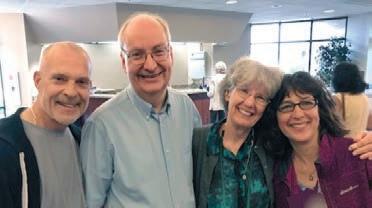

Birds need mental and physical engagement to prevent boredom, stress and behavioral issues like feather plucking or excessive screaming. Ways to keep birds stimulated are:
• Toys: Rotate foraging, shreddable and puzzle toys.
• Exercise: Provide supervised flight time or climbing structures.
• Socialization: Interact, train and talk to them daily.
• Food variety: Use foraging toys or skewers to make meals engaging.
• Sensory enrichment: Play calming music or provide safe window views.
Ruth Roberts is an integrative veterinarian and holistic health coach for pets, as well as the creator of The Original CrockPet Diet. Learn more at DrRuthRoberts.com.

Hope to see you
by Marlaina Donato
Gardeners have long understood that getting their hands in the earth makes them feel better, and scientific research supports this belief. Studies of the soil-dwelling bacterium Mycobacterium vaccae have linked the practice to improved mood, as well as reduced stress and anxiety, because it can trigger the release of serotonin. Other reported benefits include anti-inflammatory and immunoregulatory properties, relief from skin allergies and reduced lung cancer-related nausea and pain.
Data researchers at Statista report that a mere 8 percent of our lives is spent outdoors, leading to what author Richard Louv calls nature-deficit disorder, a phenomenon that compromises the well-being of both children and adults. According to Pam Montgomery, author of Co-Creating
with Nature: Healing the Wound of Separation, “We are a part of nature, and yet, we have fallen into this deep amnesia where we have forgotten that we are kin to the tree, the river, the mountain and all of life. Being separated from the source of one’s sustenance creates a deep chronic level of stress, which affects us on all levels.”
Whether we nurture houseplants, capture seasonal outdoor photographs, doodle in a nature journal, plant patio flowers or simply stroll a local park, reconnecting with living organisms can bolster our immune system, enhance cognitive function and improve mental well-being.
A 2020 review published in Frontiers in Psychology shows that as little as 10 to 20 minutes of time spent in nature improved

the mental health of college-aged adults. Notably, being outdoors in urbanized settings did not yield comparable benefits. Furthermore, a 2019 study published in the International Journal of Environmental Research and Public Health revealed improved attention and focus among 23 students aged 11 to 13 years that studied with plants in the classroom.
“Our bodies evolved in the natural world, and, for many basic functions, we took our cues from the natural world—light levels, day length, plentifulness of resources. However, we now spend over 90 percent of our time in climate-controlled buildings with artificial light, so we are cut off from these cues,” says Cynthia McPherson Frantz, chair of the department of psychology at Oberlin College, in Ohio.
Montgomery concurs, noting, “Because we are constantly surrounded by artificial electro-magnetic fields (EMFs) like those of cell phones, computers and alternating current, instead of the natural EMFs of the forest, streams, Earth, ocean, birdsong, et cetera, our energy bodies become full of static, and we lose the ability to hear the messages and receive the ‘touches’ from nature.” For Montgomery, who maintains a shamanic partnership with the natural world, plants are conscious beings, and the Earth is calling us back into relationship, reciprocity and reverence.


Join as a KnoWEwell Regenerative Whole Health member
AND WELL-BEING
VETTED PRACTITIONERS
Find your best-matched vetted holistic and whole health providers
WEBCASTS
700+ and Growing ive and On-Demand Expert Webcasts
EDUCATIONAL SHOWS
Curate your own library of 160+ and Growing Whole Health Expert hows
COMMUNITIES
Make meaningful connections in 200+ and growing Whole Health & Expert Communities
DISCOUNTS
Get discounts on expert healing programs and courses
Natural Awakenings
readers receive a 30% discount on KnoWEwell memberships.
Join at: nowewell.com/ communi /join-individuals





Make a meaningful impact in your community by becoming the owner of a Natural Awakenings magazine. Empower others with current, valuable insights and resources to enhance their physical, mental, emotional and spiritual well-being.
As a franchise owner, you’ll inspire positive change, provide readers with tools for healthier living and connect local businesses with an audience eager for transformation.
Why Own a Natural Awakenings Magazine?

n Create a Healthier Community: Be the go-to resource for wellness and personal growth in your area.
n Boost Your Income: Take control of your financial future with a proven business model.
n Enjoy a Flexible Lifestyle: Work from home while pursuing a fulfilling, dynamic career.
n A proven business model with low startup costs.
n Comprehensive training and friendly, ongoing support.
n Flexible work schedule with many work-from-home opportunities.
n Access to a network of like-minded franchise owners.
n Financing Options Available.
Join a thriving network of passionate franchise owners reshaping the future of holistic health and wellness.
Call 239-206-2000 for a FREE evaluation of your community’s potential. Learn more or apply today at: Corp.NaturalAwakenings.com

or learn more, visit Corp.NaturalAwakenings.com.
Add Your Community to Where Natural Awakenings Is Now Publishing:
• Atlanta, GA
• Boston, MA
• Broward County, FL
• Bucks/Montgomery Counties, PA
• Central Florida/Greater Orlando, FL
• Central New Jersey
• Charlotte, NC
• Chicago, IL
• Columbia, SC
• Dallas, TX
• Daytona/Volusia/Flagler Counties, FL
• Detroit/Wayne County, MI
• Fairfield & Southern Litchfield Counties, CT
• Gainesville/Ocala/The Villages, FL
• Grand Traverse Region/Northern Michigan
• Greater Ann Arbor, MI
• Greater Lansing, MI
• Greater Oakland, Macomb, Livingston, Genesee, MI
• Gulf Coast, Alabama/Mississippi
• Hartford/Tolland, CT - Coming soon
• Houston, TX
• Hudson County, NJ
• Jacksonville/St. Augustine, FL
• Lancaster/Berks, PA
• Lehigh Valley, PA
• Long Island, NY
• Milwaukee, WI
• Monmouth/Ocean Counties, NJ
• Naples/Fort Myers, FL
• New Haven, CT
• New London/Windham, CT - Coming soon
• New York City, NY
• North Central New Jersey
• North New Jersey
• Northwest Florida
• Palm Beach, FL
• Philadelphia, PA
• Phoenix, AZ
• Pittsburgh, PA
• Rhode Island
• Richmond, VA
• Sarasota, Manatee, Charlotte and DeSoto Counties, FL
• South Central Pennsylvania
• South Jersey, NJ
• Southeast North Carolina
• Space & Treasure Coast, FL
• Tampa, FL
• Tucson, AZ
• Twin Cities, MN
• Westchester/Putnam/Dutchess, NY
• Western Michigan


NOTE: Please check market websites and ArizonaCommunityFarmersMarkets.com for more information on days and hours, and any restrictions.
Ahwatukee Farmers Market
4700 E Warner Rd, Phoenix
Sundays Oct-May 9am-1pm Jun-Sep 8am-11am
Facebook.com/AhwatukeeFarmersMarket
Carefree Farmers Market
1 Sundial Circle
Fridays Oct-May 9am-1pm Jun-Sep 8am-11am
Facebook.com/CarefreeFarmersMarket
Downtown Chandler Farmers Market
3 S Arizona Ave
Saturdays Oct-May 9am-1pm Jun-Sep 7am-10am
DowntownChandler.org/events/farmers-market
Downtown Mesa Farmers Market
1 E Main St
Saturdays 8am-noon dtMesaFarmersMarket.com
Downtown Phoenix Farmers Market 720 N 5th Street
Saturdays Oct-May 8am-1pm
May-Oct 7:30am-11:30am DowntownPhoenixFarmersMarket.org
Gilbert Farmers Market
222 N Ash St
Saturdays Oct-Apr 8am-noon May-Sep 7-11am GilbertMarket.com
High Street Farmers Market
5415 E High St, Phoenix
Sundays Oct-May 9am-1pm
Facebook.com/Farmers-Market-on-HighStreet-2244771575799425
Mommas Organic Market
Arrowhead Farmers Market
7780 W Arrowhead Towne Center, Glendale
Saturdays Oct-Apr 9am-1pm | May-Sep 8-11am
Facebook.com/Getlocalazfarmersmarkets GetLocalArizonaEvents.com
Mommas Organic Market
Glendale Farmers Market at Cabela’s 9380 W Glendale Ave, Glendale
Sundays Sep-May 10am-2pm | closed for summer Facebook.com/Getlocalazfarmersmarkets GetLocalArizonaEvents.com
Ocotillo Farmers Market
2577 W Queen Creek Rd, Chandler
Sundays Oct-May 9am-1pm ArizonaCommunityFarmersMarkets.com/ ocotillo-farmers-market
Old Town Scottsdale Farmers Market
3806 N Brown Ave
Saturdays Oct-Apr 8am-noon, May-Jun 7-10am
Facebook.com/OldTownScottsdaleFarmersMarket
Power Road Farmers Market
4011 S Power Rd, Mesa
Monday-Saturday 9am-5pm | Sunday 9am-4pm PowerrdFarmersMarket.com
Roadrunner Park Farmers Market
3502 E Cactus Rd, Phoenix
Saturdays Oct-May 8am-noon | Jun-Sep 7-10am
Facebook.com/RoadrunnerParkFarmersMarket



Singh Meadows Farmers Market 1490 E Weber Dr
Fridays, Saturdays & Sundays 8am-2pm
Facebook.com/SinghFarms
Sun City Farmers Market 16820 N 99th Ave
Thursdays Oct-May 9am-1pm Facebook.com/Sun-City-Farmers-Market631299790224049
Uptown Farmers Market 5757 N Central Ave, Phoenix Wednesdays Oct-Apr 9am-1pm & May-Jun 8am-noon
Saturdays Nov-Apr 8am-1pm & May-Oct 8am-noon
UptownMarketAZ.com
Verrado Community Farmers Market N Market Pl & W Main St, Buckeye Sundays Oct-Jun 9am-1pm Facebook.com/VerradoCommunityFarmersMarket
Farmers Market in Old Town Square 1042 N Main St, Cottonwood Wednesdays 3-7pm (check months/times throughout year)
Facebook.com/FarmersMarketatOldTownSquare
Flagstaff Community Farmers Market 211 W Aspen Ave, City Hall Parking Lot Sundays May-Oct 9am-1pm FlagstaffMarket.com
Prescott Farmers Market
Dignity Health, YRMC 900 Iron Springs Rd, Miller Valley Lot Saturdays Nov-Mar 9:30am-12:30pm Apr-Oct 7:30am-noon PrescottFarmersMarket.org
Sedona Community Farmers Market
Wells Fargo Bank Parking Lot 2201 W State Rte 89A, West Sedona Sundays May-Oct 8am-noon Nov-Apr 11am-3pm Sedona-Farmers-Market.com
Verde Valley Farmers Market Hollamon St and Main St, Camp Verde Saturdays May-Oct 8-11am Facebook.com/VerdeValleyFarmersMarket
Windmill Park Farmers Market
9950 E Cornville Rd, Cornville Thursdays 2-6pm (check months/times throughout year)
Facebook.com/WindmillParkFarmersMarket



Connecting you to the leaders in natural health care and green living in our community. To find out how you can be included in the Business Directory, email PhoenixAds@NaturalAZ.com to request our media kit.
ARIZONA LEECH THERAPY
Pavel Gershkovich, CHP, CRP, PMP, Therapist 8765 E Bell Rd, Ste 110, Scottsdale 480-621-6041 • ArizonaLeechTherapy.com ArizonaLeechTherapy@gmail.com

Pavel Gershkovich, owner of Arizona Leech Therapy, is a professional medicinal leech therapist. He is here to help you find a natural, drug-free solution for your medical conditions, such as cardiovascular, high blood pressure, migraine, urology/ prostate, varicose veins, and deep venous thrombosis. See ad, page 17.
LEADING EDGE WELLNESS
MacKenzie Kalt, Owner/Director 4050 E Greenway Rd, Ste 5, Phoenix 480-594-5052 • MyLeadingEdgeWellness.com

Providing some of the most advanced natural technologies for those struggling with chronic pain, injuries, stress, migraine headaches, PTSD, insomnia, Lyme disease, autoimmune disorders, skin conditions, and much more. Visit our website to learn more. See ad, inside front cover.
NATURAL MEDICINE & DETOX
2701 N 7th St, Phoenix 602-307-0888 • NaturalMedicineDetox.com

We offer a wide range of services that can help just about everyone at affordable prices. We also accept insurance for acupuncture, including Medicare. Please take a look at our website to learn about our services, gifted practitioners, and insurance information and form to see if your plan covers acupuncture. See ad, page 13.
NAMASTE BOOKKEEPING
Jen & Mark Arnold
480-442-8208
JandM@NamasteBookkeeping.com

You are passionate about the work you do! It’s not a job; it’s a mission, a calling, a ministry. And it lights you up! There is nothing you would rather be doing. You make a difference! Let us help you so you can help the world!
ALLY SPINE CENTER
10565 N 114th St, Ste 109, Scottsdale 480-809-4700 • asc.drc2000@gmail.com
AllySpineCenter.com

Dr. Chris Condon utilizes stateof-the-art techniques and technologies including non-surgical spinal decompression with the SpineMed and SUMMUS class 4 medical laser for the correction of degenerative spinal conditions including stenosis, herniated/bulging discs and neuropathy as well as knee decompression with the Knee On Trac.
NATURAL DENTAL PARTNERS
6930 E Chauncey Ln, Ste 100, Phoenix 602-775-5120 • MyNaturalDentist.com



The doctors at Natural Dental Partners take the time to listen to your concerns and use their extensive experience to help you achieve better health. Using the latest technology (such as low-dose 3D imaging, CEREC, lasers, PRF, ozone and treatment of sleep disorders), they believe in a team approach to help you achieve your healthcare goals. Check out MyNaturalDentist.com or ABreathOfHealth. com to see how they can help you. See ad, page 3.

Dr. Josh Raiffe, DMD, AIAOMT 11111 N Scottsdale Rd, Ste 120, Scottsdale 480-998-3923 • SheaDentalAZ.com

Shea Dental offers holistic dentistry led by Dr. Josh Raiffe, DMD, AIAOMT Accredited. Using advanced technology like CEREC milling, digital impressions, Wand anesthesia, cone beam CT scanning, and SMART mercury filling removal, Dr. Raiffe ensures safe dental practices. Services include implants, veneers and sleep apnea treatments. Accepts most dental insurance. See ad, page 5.
KIM CARTER, MA, HTCP 15215 S 48th St, Ste 154, Phoenix Kim@IntuitiveKim.com • IntuitiveKim.com

Kim is an Intuitive and Healing Touch Certified Practitioner offering guidance when you feel out of alignment with your authentic self. Stress, fear, anxiety and grief/loss throw us off balance, making it challenging to access inner wisdom. Sessions include reading and clearing your energy field; and simple, practical selfhealing tools to keep you balanced and grounded. See ad, page 13.
YOUR LIFE
WELLNESS CENTER
931 E Southern Ave, Ste 106, Mesa 480-306-7321 • RealignYourLifeAZ.com
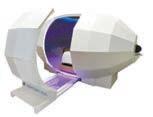
Realign Your Life Wellness Center features the Harmonic Egg—sound and light therapy for physical, emotional and spiritual energy healing. Other services include The Body Code, Life Force Energy with Sound, sound baths and Higher Guidance Life Coaching. See ad, page 13.

SACRED LIGHT OF COSMIC
AWARENESS COMMUNITY
480-273-4577
• SacredLight777@proton.me
SacredLightCommunity.com

Reclaim your power. Identify your soul purpose. Spiritual healing an d self-realization workshops. Channeled messages from the Divine Creator. Free PastLife Readings. Develop psychic clarity, inner trust, strength and confidence; examine hidden unconscious patterns; and engage in personal power management, karmic healing, calming the mind and dream interpretation.
OSTEOSTRONG
8120 N Hayden Rd, Scottsdale
Text/call 602-932-2792
OsteoStrongScottsdale.com

OsteoStrong is a leader in natural bone health and wellness with centers in Phoenix (Arcadia) and Scottsdale (McCormick Ranch). Our m embers report significant improvements in osteoporosis, physical strength, balance and posture in 15 minutes a week. Specializing in osteogenesis without drugs, we’re dedicated to holistically enhancing quality of life.
PRECISION BONE IMAGING
Locations in Phoenix and Scottsdale 888-415-7377
PrecisionBoneImaging.com

Precision Bone Imaging is the #1 Echolight REMS provider in the U.S., offering a more accurate, radiationfree alternative to DXA for bone density and quality assessments. REMS technology delivers a comprehensive assessment, helping you prevent osteoporosis or monitor your bone health baseline with confidence. See ad, page 4.
RESTORING VITALITY CLINIC
Paw Kamwee, NMD
34470 S Old Black Canyon Hwy Black Canyon City
623-374-9498 • Restoring-Vitality.com

At Restoring Vitality, we blend the best of modern science with time-honored natural healing techniques to provide a comprehensive and integrative approach to your wellness. We believe in empowering our patients to take control of their health, and we are committed to providing the guidance and support you need to achieve your wellness goals. See ad, page 14.
ANDREA BRIGGS, AKA “CRITTER DOC”
ASAM, Sh Reiki, HTAP Communicator, Healer, Counselor 602-317-1543 • 1CritterDoc@gmail.com SpiritAnimalWisdom.com

With a gentle healing touch, Andrea provides wellness counseling, energy healing, animal communication, and intuitive counsel for pets and their people.
SOUTHWEST INSTITUTE OF HEALING ARTS
1538 E Southern Ave, Tempe 480-994-9244
Info@swiha.edu • swiha.edu

Nationally accredited college offers holistic health and wellness degrees, diplomas, certificates of excellence, continuing education and personal development, oncampus and online. Financial aid available. See ad, outside back cover.
DIMENSIONS OF HEAVEN AND EARTH
11108 N Frank Lloyd Wright Blvd, Ste E16 Scottsdale • 732-832-1036
DimensionsOfHeavenAndEarth.com

Dimensions of Heaven and Earth is Scottsdale’s exciting, new one-stop Spiritual Experience: a center of healing and insight combined with a store full of unique gifts from local artisans. With training and tools for your personal development, we are excited to help you take your spiritual journey to new levels! See ad, page 21.
ECKANKAR
The Path of Spiritual Freedom 1-877-300-4949 • EckankarArizona.org Eckankar.org • HearHU.org Facebook.com/EckankarArizona

Eckankar is an active, individual, creative spiritual practice. A companion and roadmap for your journey home—to the heights of Self-Discovery and GodDiscovery, and beyond. Come along and discover the most secret part of yourself. The key to spiritual freedom lies within you. Explore life as a Soul Adventure. See ad, page 25.








